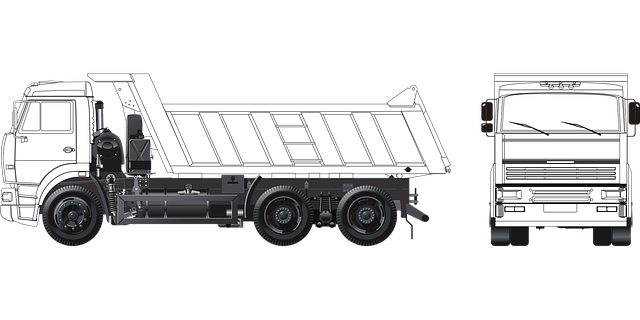Looking to register your car in California? This guide will walk you through the process, ensuring a smooth transition. First, understand the state’s unique registration requirements and gather essential documents for VIN verification—a crucial step in the process. Next, perform a Vehicle Identification Number (VIN) check at an approved location. Once ready, visit a California Motor Vehicle Registry to complete the registration and title transfer.
- Understand California Car Registration Requirements
- Gather Necessary Documents for VIN Verification
- Perform Vehicle Identification Number (VIN) Check
- Choose a California Motor Vehicle Registry Location
- Complete the Registration and Title Transfer Process
Understand California Car Registration Requirements

Before registering your car in California, it’s crucial to understand the state’s specific requirements for vehicle identification number (VIN) verification. The Golden State has stringent regulations to ensure road safety and vehicle authenticity. One key aspect is ensuring that the VIN on the car matches the one listed on the registration documents and title. This process, often referred to as a vin inspection or vin verification, plays a vital role in combating fraud and ensuring only legitimate vehicles are on California’s roads.
A mobile vin inspection can be a convenient option for many vehicle owners. This service allows you to have the VIN of your car checked by a professional at your location, saving you time and effort. It involves a thorough examination of the vehicle’s unique identifier to confirm its history, make sure there are no outstanding issues, and ensure compliance with California’s registration standards.
Gather Necessary Documents for VIN Verification

Before registering your car in California, you’ll need to gather several crucial documents for VIN (Vehicle Identification Number) verification. This process is essential to ensure the accuracy and authenticity of your vehicle’s details. One key step is to obtain a valid registration certificate from the previous owner, which includes the vehicle’s history and any associated records. Additionally, you must have a current insurance card displaying the vehicle’s policy number and coverage details.
For convenience, many California residents opt for a mobile VIN inspection or verification service. These services send a trained professional to your location to complete the VIN check, saving you time and effort. Having these documents ready ensures a smoother registration process and allows you to hit the road faster.
Perform Vehicle Identification Number (VIN) Check

Before you begin the registration process, it’s crucial to perform a Vehicle Identification Number (VIN) check. This step is essential for ensuring that your car is roadworthy and in compliance with California’s regulations. A VIN verification involves scanning and cross-referencing your vehicle’s unique identification number against state records to confirm its history and authenticity.
Consider using a mobile vin inspection or verifier service, which can provide quick and convenient results. These services often allow you to check the vehicle’s past ownership, accident history, and outstanding recalls, all of which are vital in terms of vin inspection. By completing this crucial step, you’ll have a smoother registration experience and help ensure your car is safe and legal on California’s roads.
Choose a California Motor Vehicle Registry Location

When registering your car in California, choosing the right location for your vehicle’s inspection is key. You’ll need to visit a California Motor Vehicle Registry (DMV) office or an authorized third-party service that conducts VIN verification and inspections. Consider convenience and proximity when selecting a location; some DMV offices offer additional services like registration renewals, license plate replacements, and title transfers, making them one-stop shops for all your vehicle needs.
If you prefer a more flexible approach, consider using a mobile VIN verifier or scheduling a mobile vin inspection. These options bring the inspection process to your convenience, allowing you to get your car registered without the hassle of visiting a physical location. With various providers available, compare services and pricing to find the best fit for your needs, ensuring a smooth and efficient registration experience in California.
Complete the Registration and Title Transfer Process

Once you’ve gathered all the necessary documents and passed the smog test, it’s time to complete the registration and title transfer process with the California Department of Motor Vehicles (DMV). This involves submitting your application, along with the required fees, at a DMV field office. Before heading in, ensure that your vehicle’s VIN is accurate and verified through a mobile vin inspection or traditional vin inspection to maintain compliance with state regulations.
During this step, you’ll receive a registration certificate and a new license plate for your vehicle. It’s crucial to keep these documents secure as they serve as official proof of ownership and registration in California. Following this process ensures that your car is legally registered and ready to hit the road.
Registering a car in California involves understanding key requirements, gathering essential documents for VIN verification, performing a critical VIN check, selecting a convenient Motor Vehicle Registry location, and completing the registration process. By adhering to these steps and ensuring accurate VIN verification, you’ll securely and legally register your vehicle in the Golden State.
